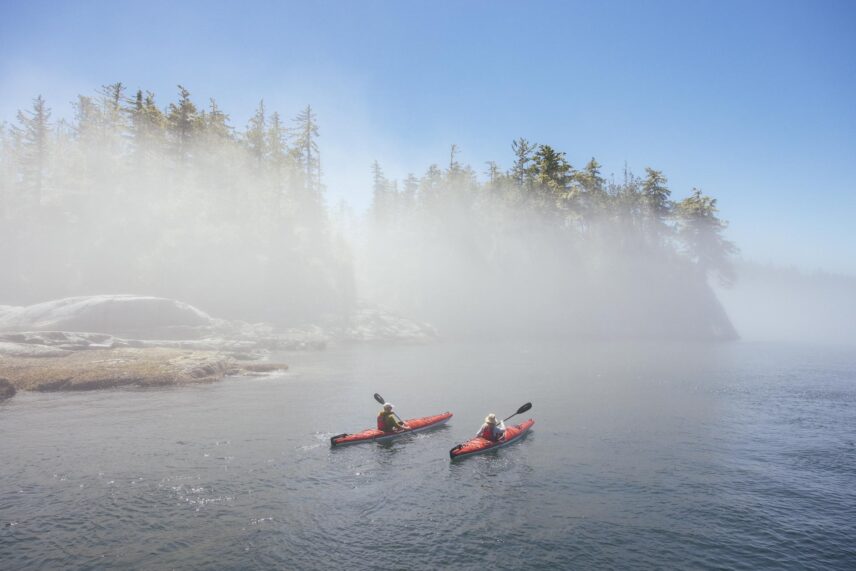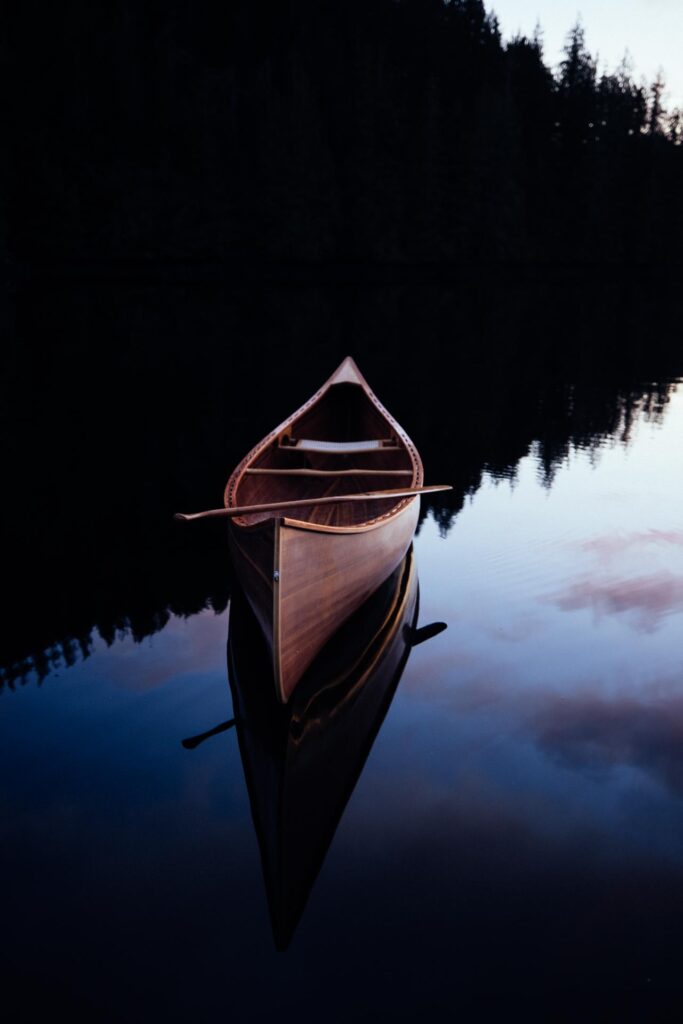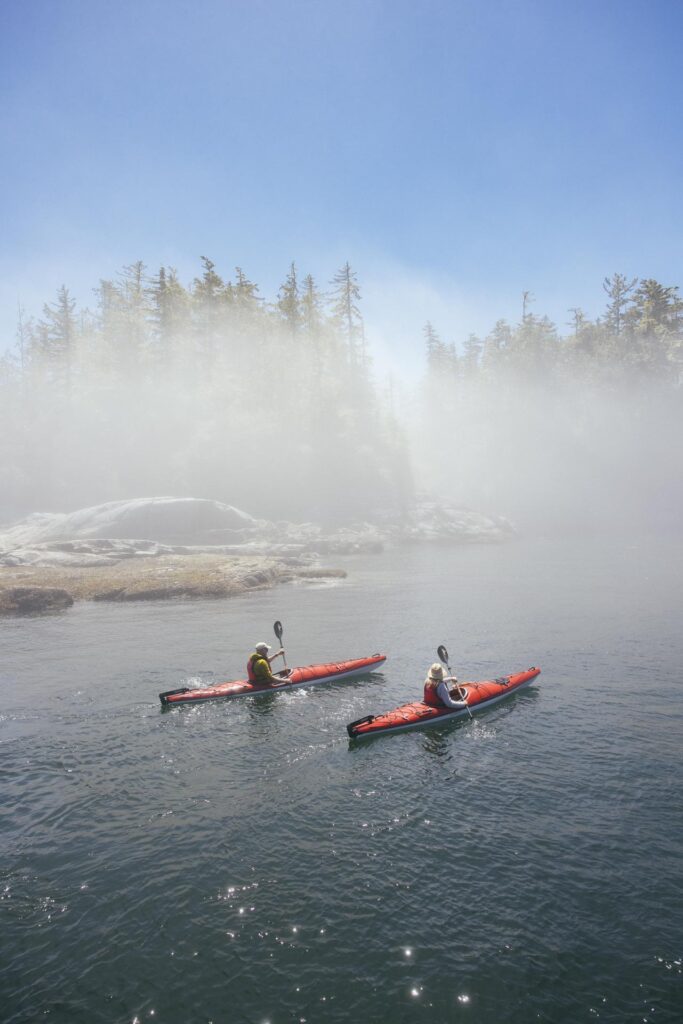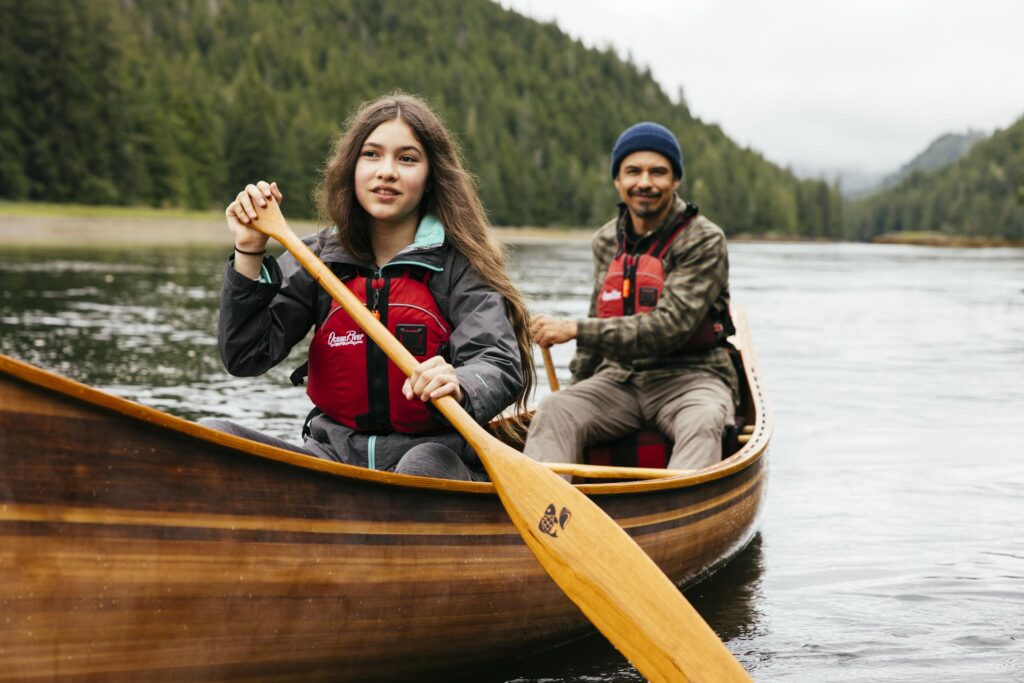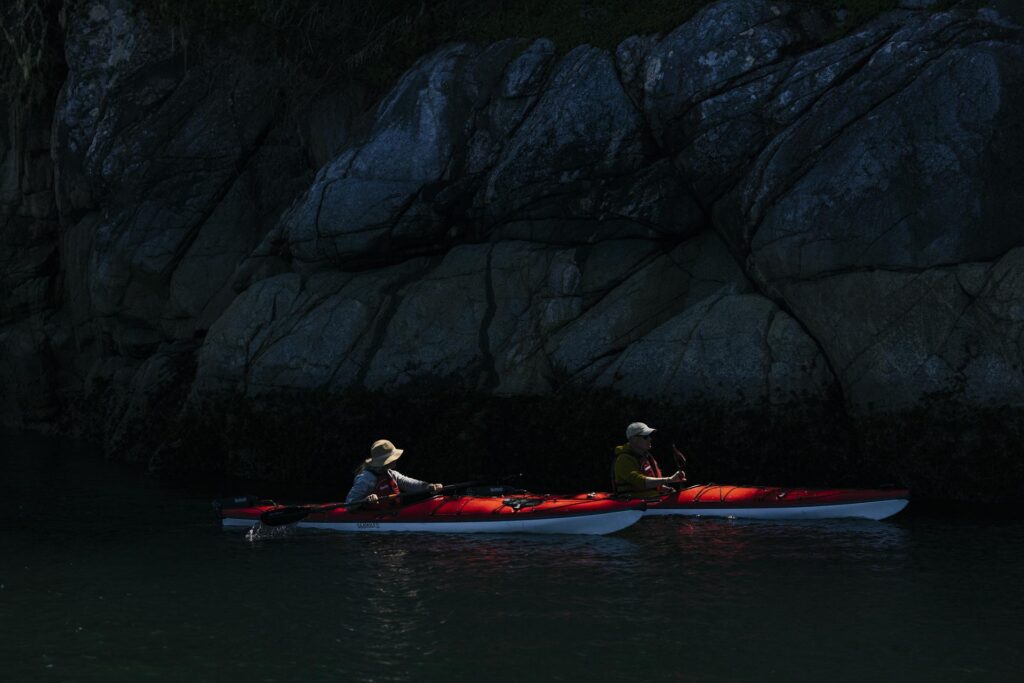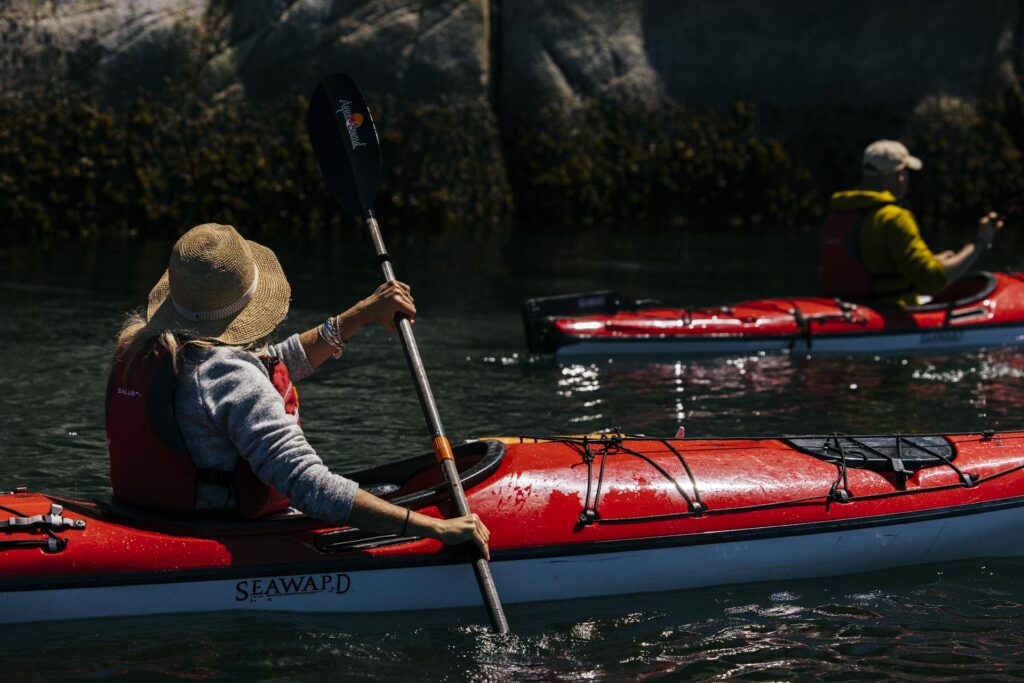Imagine: the sound of a canoe paddle dipping below the surface, moving through the water, and exiting with a small splash. Now imagine that’s one of the only sounds you hear, along with bird songs and the occasional splash of a fish jumping out of the water. You can find this paddling peace at Nimmo Bay as you explore our paradise of coves, bays, lagoons, and rivers in a kayak or canoe. Let’s dive into why we love these historic watercraft.
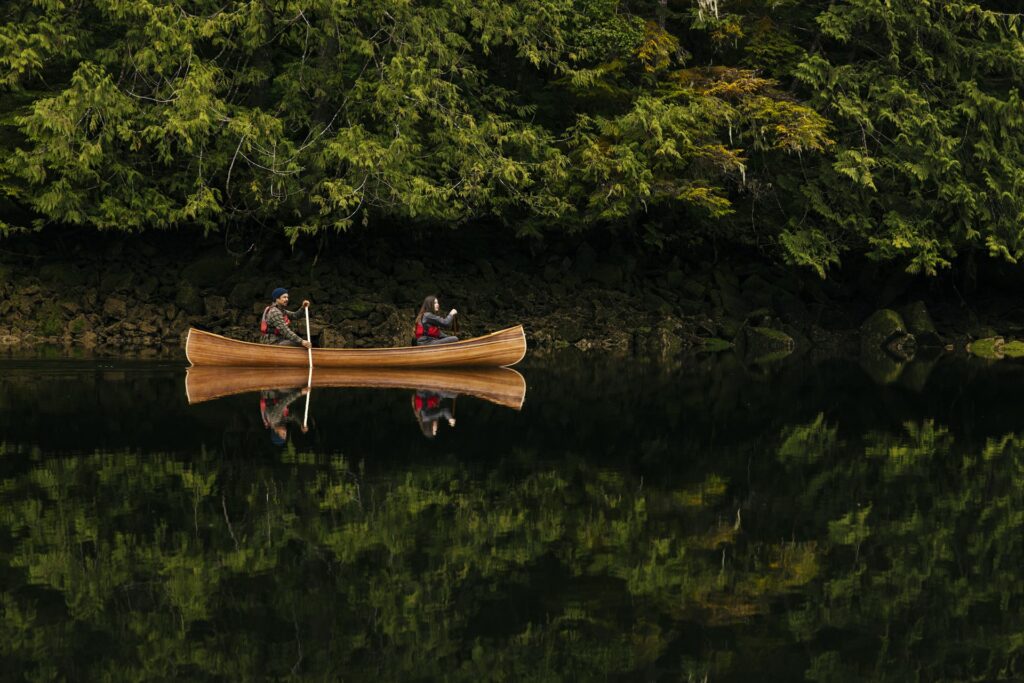
Paddling in the PasT
The history of the canoe in Canada dates back a millennium to the First Peoples. The deep, durable watercraft were the primary mode of transportation on the coast. On the Pacific Coast, the first canoes were often constructed from white birch trees, but the vessels can also be constructed from dug-out trees and enhanced with animal hide. Canoes can carry their passengers and paddlers great distances, along rivers, and across lakes.
Kayaks have a different origin story. They were invented by the Inuit in the Arctic about 2000 years ago. The design differs from a canoe as the kayak has a covered deck to ensure icy water doesn’t enter the boat and improves agility on the water. Kayaks were designed with enough space for one to three people, and tools for hunting and fishing expeditions.
Both watercraft provide people with a means of connecting deeply with the surrounding environment, access to traditional resources, encountering wildlife, and interacting with other communities.
The canoe and kayak’s usefulness transcend time; as they are still widely used today.
Our Love for These Vessels Runs Deep
Canoes and kayaks have stood the test of time, maintaining their place in the now long list of watercraft available. So how have these vessels outlasted the evolution of machines? And what are the benefits of canoeing and kayaking?
Let’s dive into the list of benefits when going for a paddle — all of which you can experience while exploring the water around Nimmo Bay.
Being close to the surface of the water allows you to interact with it intimately. This is especially true in a kayak when you’re essentially sitting in the water, only separated by a thin layer of fibreglass.
Another benefit of these self-propelled units is the exercise. Both offer an excellent upper body workout that can be as intense or low-impact as you desire (unless you’re the lucky one sitting in the middle of the canoe). The rhythmic strokes and natural surroundings almost make you forget that you’re working on your cardio.
Speaking of the rhythm, the consistent dip and splash of the paddle encourages you to enter a meditative state on your journey. If you’re seeking mental clarity, grab a paddle, a boat, and hit the water. You’ll flow easily into the present moment. As long as you pack a lunch, there’s really nothing else to think about while you’re on the water. Goodbye stress!
If you’re in a two-person watercraft, you benefit from teamwork, trust, and communication — sometimes even without words. So go for a paddle with your loved one or best friend and see just how in sync you really are.
We’d be forgetful not to mention the opportunity to completely immerse yourself in nature while out in the canoe or kayak. No motor, no captain; just the sounds of the paddle, the water, and abundant nature all around you, appealing to every sense. Dip your hand in the cold water, feel the wind on your face, and taste the saltiness in the air.
Are you ready for an experience like this? Click below to book your trip!
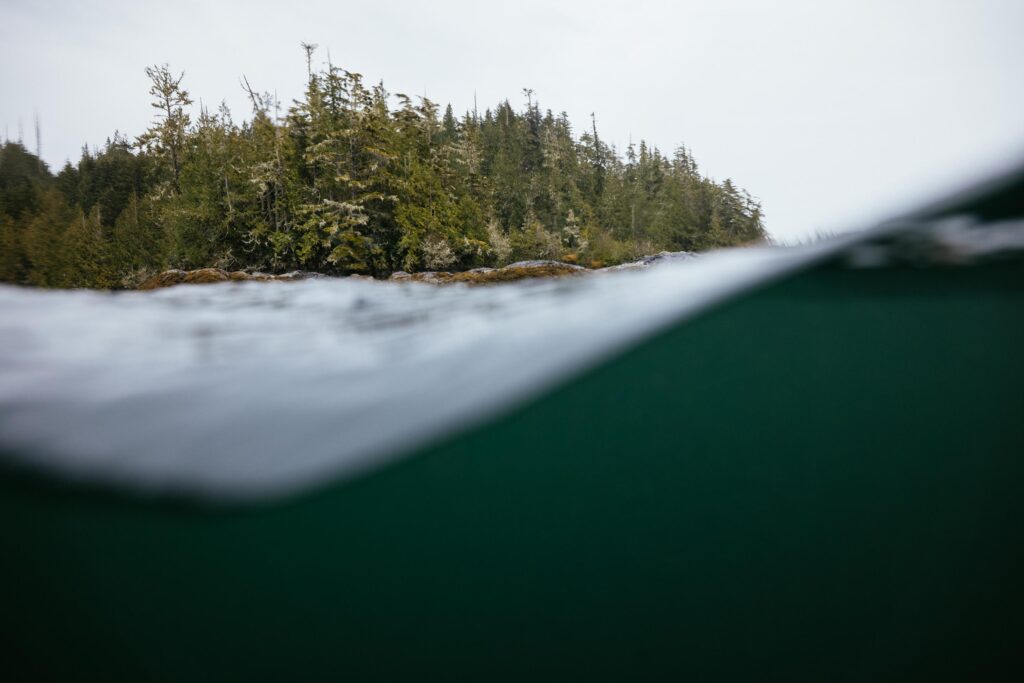
From Long Journeys to Racing on Rapids
Modern materials can be used instead of more traditional materials like wood planks and animal hide. These watercraft can endure great distances and fierce rapids without fail.
If it’s a long adventure you seek, a canoe offers more comfort and space for its passengers. You can pack a tent and food for a few days and paddle to hidden campsites along the coast or lakeshore. You’ll get even more exercise if you need to portage by carrying your canoe overhead on land.
For adrenaline junkies, both canoes and kayaks can be taken out on rapids or beach breaks for some serious heart pumping action. Top tip! You’ll have more control in a kayak that’s closer to the water and has a skirt attachment. This helps make you one with the boat.
Practice Paddling at Nimmo Bay
Some of the most rewarding paddles come when you least expect them. At Nimmo Bay, we’re surrounded by these hidden lagoons, bays, and coves waiting to be explored by boat. Join us for a stress-melting, mind-healing journey in a canoe or kayak.
Photos: Jeremy Koreski
